Hole in the Clouds
Feb 2, 2011
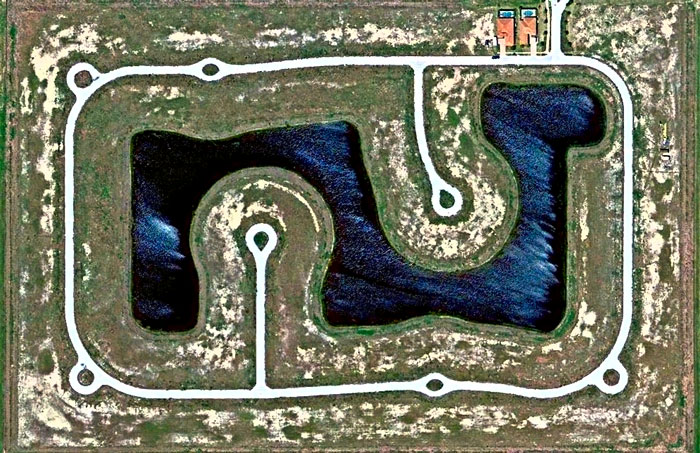 This is a picture of a real estate bubble. There have been land bubbles in Florida since forever; what we're looking at here is just the bubble du jour, a subdivision near Fort Myers, on the Gulf Coast, where the developer put in the roads and the "lake" and the cul de sacs and managed to build two houses complete with swimming pools before it was all over.
This is a picture of a real estate bubble. There have been land bubbles in Florida since forever; what we're looking at here is just the bubble du jour, a subdivision near Fort Myers, on the Gulf Coast, where the developer put in the roads and the "lake" and the cul de sacs and managed to build two houses complete with swimming pools before it was all over.
I read today that 11 per cent of the housing units in the United States are currently unoccupied. So it's really over. For a while.
birdseye view
construction
(h/t:The Big Picture at boston.com)
Florida
economics
sprawl
Fort Myers
(Image credit: Florida Dept. of Environmental Protection)
Dec 7, 2012
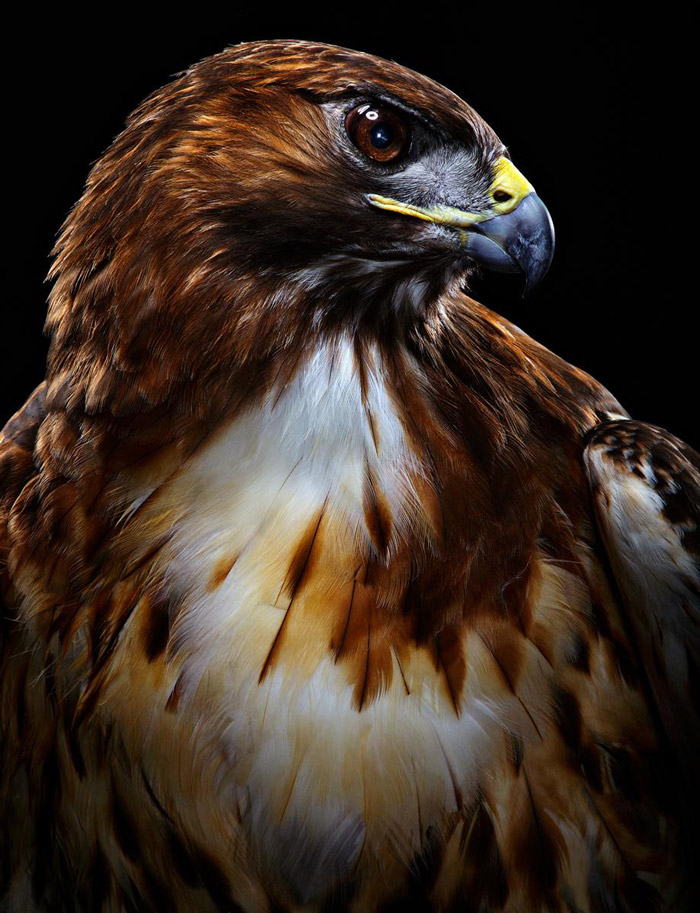 Tampa photographer Bob Croslin spent months at Florida's Suncoast Seabird Sanctuary before the birds felt comfortable enough around him that they would sit for formal portraits. This one is a redtailed hawk.
Tampa photographer Bob Croslin spent months at Florida's Suncoast Seabird Sanctuary before the birds felt comfortable enough around him that they would sit for formal portraits. This one is a redtailed hawk.
bird
Florida
Suncoast Indian Shores
red-tailed hawk
(Image credit: Bob Croslin)
Mar 19, 2014
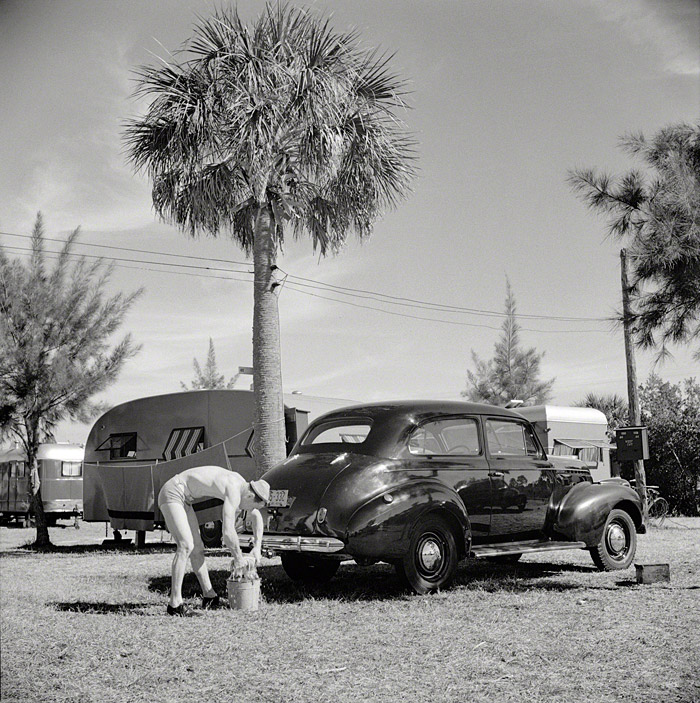 "Guest at Sarasota, Florida, trailer park washing his car," according to the notes of photographer Marion Post Wolcott. The picture was taken in 1941; the car is a 1940 Chevy Town Sedan with West Virginia license plates.
"Guest at Sarasota, Florida, trailer park washing his car," according to the notes of photographer Marion Post Wolcott. The picture was taken in 1941; the car is a 1940 Chevy Town Sedan with West Virginia license plates.
car
work
Florida
palm trees
Sarasota
Chevy
washing
vacation
(Image credit: Marion Post Wolcott via Shorpy)
Feb 17, 2016

They were newlyweds in 1905, honeymooning at the beach in St. Augustine, Florida, when they came across the photographer and his props in the sand. And they decided to get their picture made.
So the bride, in her bathing costume, straddled the donkey. And the groom, in his own bathing garb, settled himself onto the seat of the little wagon hitched up to the goat. The props were obviously intended for small children, but the newlyweds were game, even if they didn't look one bit happy about it all.
beach
1905
Florida
wagon
photography
donkeym goat
St. Augustine
(Image credit: Detroit Publishing Company via Shorpy)
Jan 17, 2017
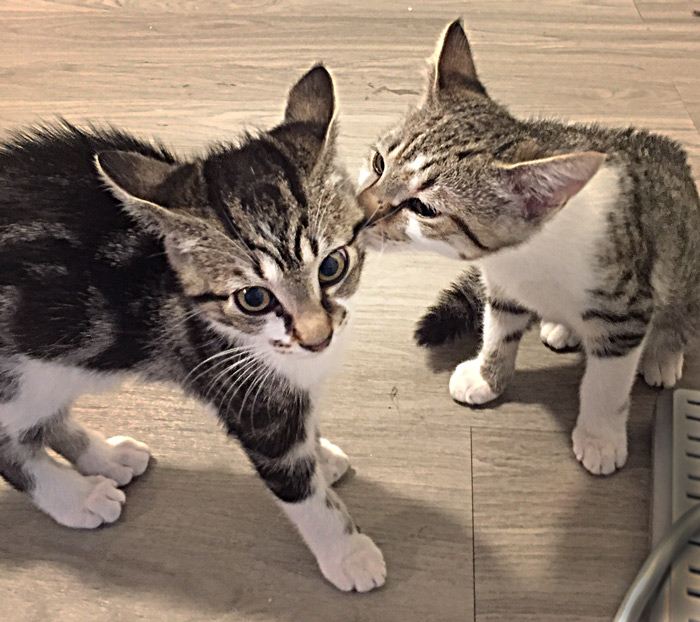 Students spotted it first, early on the morning of December 2: a little ball of fur near the door outside a high school in Boca Raton, Florida.
Students spotted it first, early on the morning of December 2: a little ball of fur near the door outside a high school in Boca Raton, Florida.
A ball of kittens, of course, two of them, tangled together in a tabby clump and much too tiny to be out on their own. They were lucky little kittens, however; each was rescued and ultimately adopted by an English teacher at the school, and one of those English teachers just happened to be our own Officer Al of the grammar patrol (the alt-write, he tells us). Both little kitties have thrived.
But like all cats, they showed up without names. And like all cats adopted by English teachers, they needed literary names, not to mention all the other fraught sorts of names catalogued by T.S. Eliot.
Allen named his cat Scout, as in To Kill a Mockingbird. But a couple of days later, when he finally got little teeny tiny Scout to the vet for a checkup, there was a surprise: Scout was a male kitty. He would need a different name. Why? We can't know these things, but Allen was very sure of it.
He considered Travis, as in Travis McGee. He considered McGee, as in Travis McGee. But those names weren't right.
He considered Sue, as in Johnny Cash. Nope.
So he settled on Phineas, from A Separate Peace, Phinny for short. And Phinny he was, until within a couple of weeks he wasn't Phinny any longer but Phinn. No, not Phinn: he was Finn. Maybe as in Huckleberry. Or maybe as in Phineas. The ambiguity was delicious.
Meanwhile, the other kitten from the clump outside the school, also a male, was named Dante. In the photo above, Finn at left and Dante on the right are back together again for a recent brotherly meetup and play date.
We might think this name thing is all settled now, but like the poet says, we think that because we're stupid:
When you notice a cat in profound meditation,
The reason, I tell you, is always the same:
His mind is engaged in a rapt contemplation
Of the thought, of the thought, of the thought of his name:
His ineffable effable
Effanineffable
Deep and inscrutable singular Name
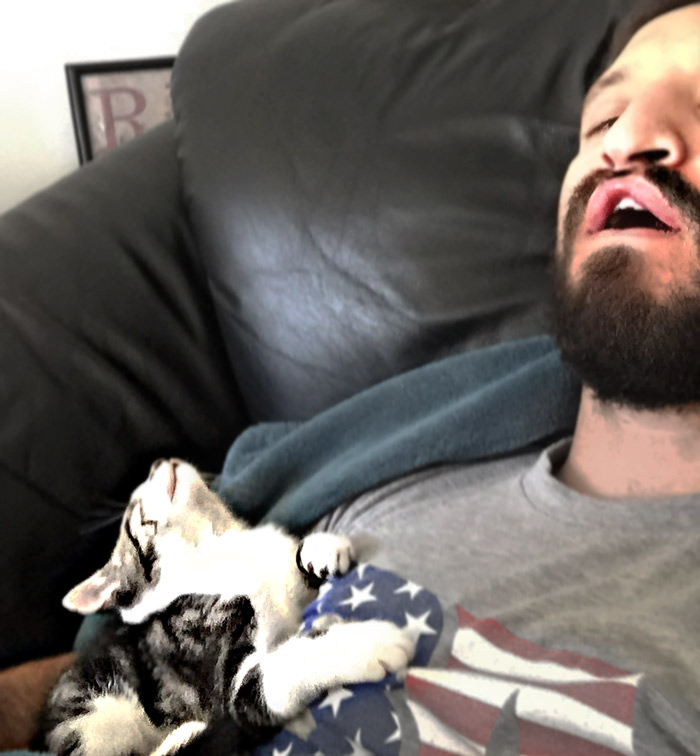
Allen
Florida
pets
cats
T.S. Eliot
Olympic Heights High School
Dante
literary references
Finn or Phinny
Feb 19, 2017
 A wood stork grabs brunch in a marsh near Tampa, Florida.
A wood stork grabs brunch in a marsh near Tampa, Florida.
February is breeding season for America's only native stork species; it is also dry season in the storks' Florida habitat, which means that ponds have become shallower and smaller, concentrating the fish population for easy pickings when these long-legged fish-eaters go out wading.
For what it's worth, wood storks are bald-headed, like certain other all-American birds, e.g., turkeys and vultures.
fish
Florida
pond
marshland
wood stork
(Image credit: Betty Cracker, via Balloon-Juice.com)
Apr 12, 2017
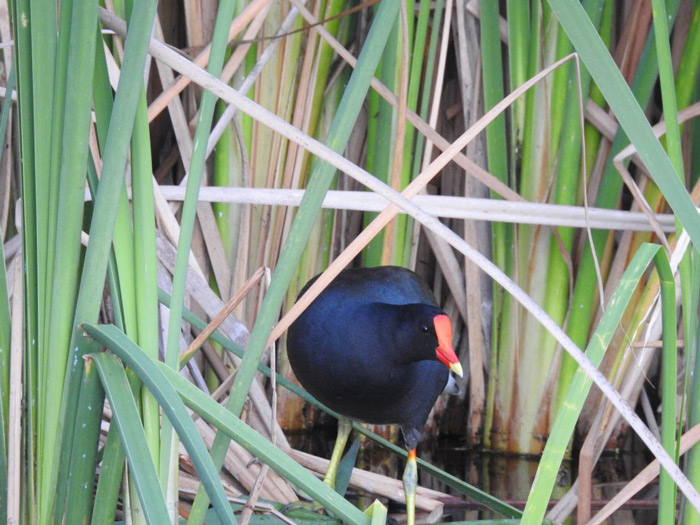 A common gallinule, at the edge of a water hazard on a Florida golf course.
A common gallinule, at the edge of a water hazard on a Florida golf course.
bird
Florida
marsh
common gallinule
golf course
Tampa
(Image credit: Betty Cracker, via Balloon-Juice.com)
May 5, 2017
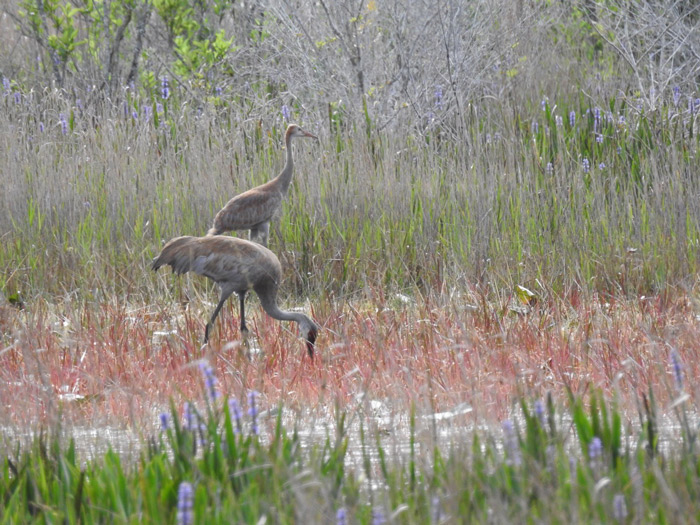 These sandhill cranes have it easy; they were spotted in their Florida marsh last week, long past spring migration time, so they're not migratory snowbirds; they live in Florida year-round.
These sandhill cranes have it easy; they were spotted in their Florida marsh last week, long past spring migration time, so they're not migratory snowbirds; they live in Florida year-round.
Some of their migratory cousins may winter with them in Florida, but if a sandhill crane expects to fly all the way back to summer nesting grounds in the marshy tundra of northern Canada, Alaska, and Siberia–which is the way most of these birds like to live their lives–then it's going to have to get out of Florida by the end of February, early March at the very latest. A rest stop each March for more than 600,000 migrating sandhill cranes is the Platte River near Fort Kearny, Nebraska, where skies darken with what is said to be one of the great natural spectacles on earth.
Sandhill cranes dance, and they have a call that's sort of in between a dove and a turkey.
Florida
birds
marsh
(Image credit: Betty Cracker via Balloon-Juice)
 This is a picture of a real estate bubble. There have been land bubbles in Florida since forever; what we're looking at here is just the bubble du jour, a subdivision near Fort Myers, on the Gulf Coast, where the developer put in the roads and the "lake" and the cul de sacs and managed to build two houses complete with swimming pools before it was all over.
This is a picture of a real estate bubble. There have been land bubbles in Florida since forever; what we're looking at here is just the bubble du jour, a subdivision near Fort Myers, on the Gulf Coast, where the developer put in the roads and the "lake" and the cul de sacs and managed to build two houses complete with swimming pools before it was all over.






